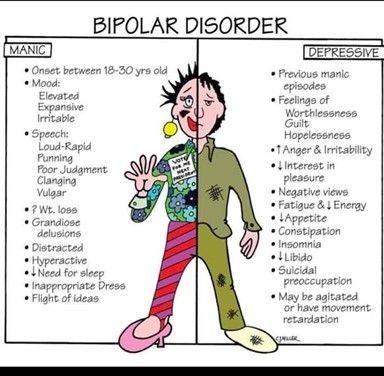A nurse at a walk in mental health clinic is assessing a client experiencing severe anxiety. The nurse should recognize the client might exhibit which of the following manifestations?
Attention-seeking conduct
Wild fidgeting
Threatening behavior
Mild difficulty problem solving
The Correct Answer is B
A. In the context of severe anxiety, clients might engage in attention-seeking behaviors as a way to express their distress or seek support. However, wild fidgeting remains a more direct and common manifestation of severe anxiety.
B. Severe anxiety can lead to various physical and psychological manifestations. "Wild fidgeting" is a common physical manifestation of severe anxiety. It involves restlessness, rapid movements, and an inability to sit still. Fidgeting can be a way for individuals to release excess energy and manage their heightened anxiety levels.
C.While severe anxiety can lead to a variety of behaviors, threatening behavior is not a typical or direct manifestation of severe anxiety. Such behavior may be more indicative of other mental health issues or agitation.
D. Severe anxiety is more likely to cause impairments in concentration, focus, and problem-solving abilities rather than mild difficulty. Severe anxiety can lead to cognitive overload and make it challenging for individuals to think clearly and solve problems effectively.
Nursing Test Bank
Naxlex Comprehensive Predictor Exams
Related Questions
Correct Answer is A
Explanation
A. The client responds to questions with disorganized speech:
Disorganized speech is a hallmark of acute mania, often reflecting racing thoughts, pressured speech, and difficulty staying on topic.
B. The client reports that voices are telling him to write a novel:
Reporting that voices are telling the client to write a novel suggests auditory hallucinations, which can occur in various psychiatric conditions, not specifically indicative of acute mania.
C. The client's spouse reports that the client has recently gained weight:
Weight gain is not a typical hallmark of acute mania. In fact, during manic episodes, individuals might experience decreased appetite and sleep, leading to potential weight loss.
D. The client is dressed in all black:
Dressing in all black is not a specific sign of acute mania. While changes in clothing choices or appearance can sometimes be associated with mood changes, this finding alone is not indicative of acute mania.

Correct Answer is ["A","B","D","E"]
Explanation
A. Hyperactivity: While some individuals with eating disorders may engage in excessive physical activity as a form of compensatory behavior, hyperactivity is not a consistent and universal manifestation.
B. Amenorrhea: Adolescents with eating disorders, particularly anorexia nervosa, often experience amenorrhea (absence of menstrual periods) due to hormonal imbalances and low body weight.
C. Verbalized desire to gain weight: Individuals with eating disorders, especially anorexia nervosa, often express a strong desire to lose weight rather than gain weight, which contributes to their restrictive eating habits.
D. Altered body image: Eating disorders are often associated with distorted body image, where individuals perceive themselves as overweight or larger than they actually are, even if they are underweight.
E. Bradycardia: Severe malnutrition, as seen in eating disorders like anorexia nervosa, can lead to bradycardia (slow heart rate) as the body conserves energy in response to the low caloric intake.
Whether you are a student looking to ace your exams or a practicing nurse seeking to enhance your expertise , our nursing education contents will empower you with the confidence and competence to make a difference in the lives of patients and become a respected leader in the healthcare field.
Visit Naxlex, invest in your future and unlock endless possibilities with our unparalleled nursing education contents today
Report Wrong Answer on the Current Question
Do you disagree with the answer? If yes, what is your expected answer? Explain.
Kindly be descriptive with the issue you are facing.
